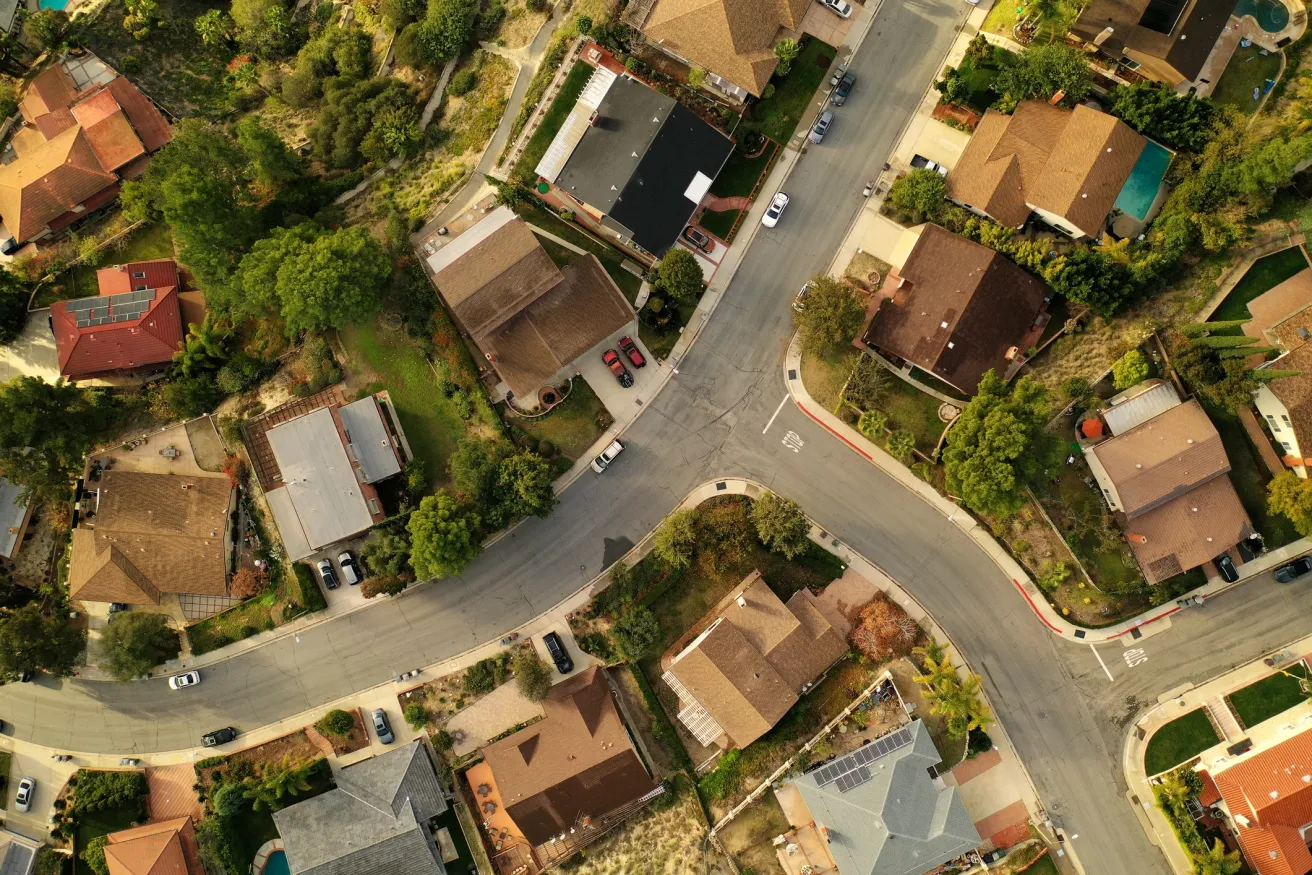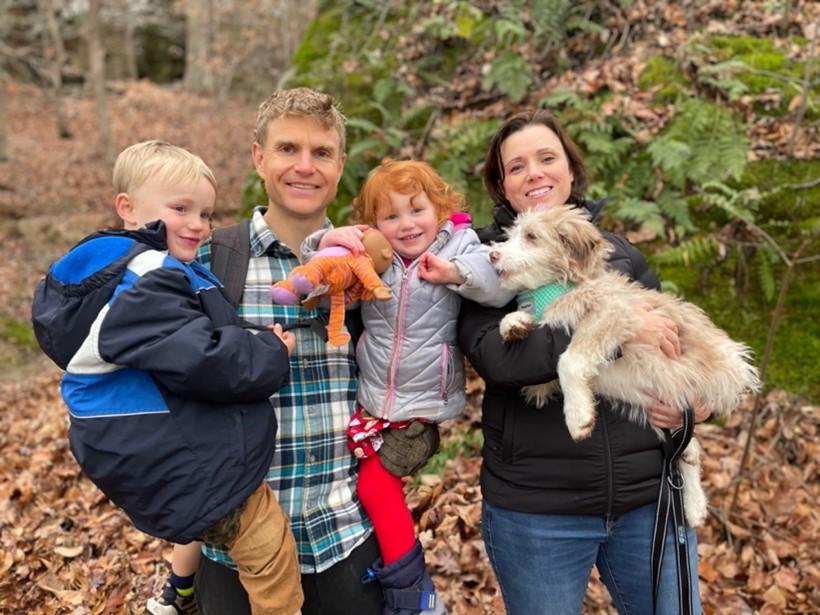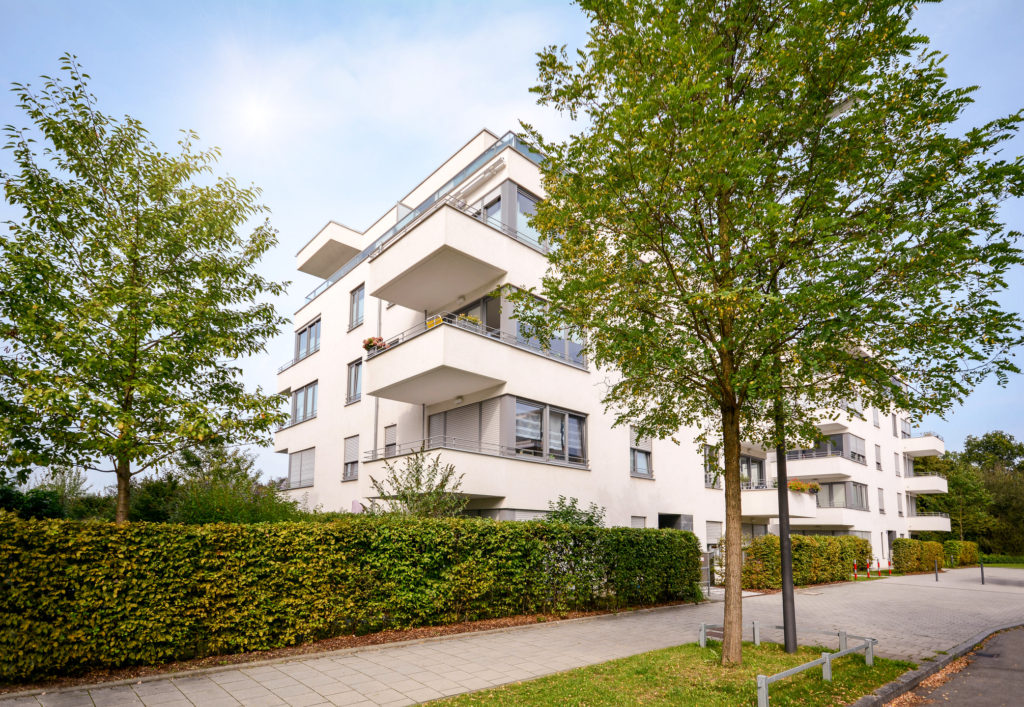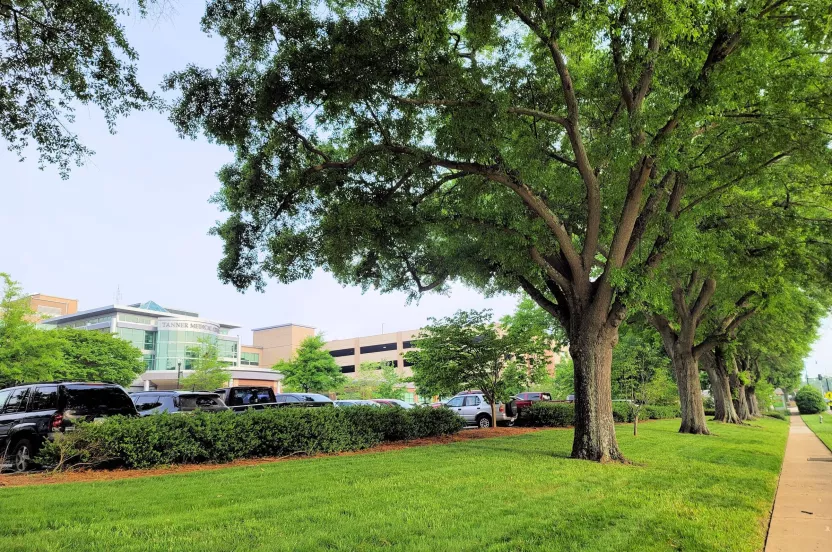Now live: The 2025 Canopy Report. Learn how Americans see trees. GET THE REPORT
Residential Nature Tied to Hundreds of Dollars of Savings in Healthcare Costs
May 17, 2022

This is a guest post provided by Matthew Browning, Assistant Professor in the Parks, Recreation, and Tourism Management department at Clemson University. Dr. Browning's research is providing us with insight into how trees can help to lower healthcare costs.
Many of us know — we feel — how essential nature is for our health and wellbeing. We seek fresh air, sunshine, birdsong, flowers, and leaves fluttering in the breeze. Such exposures to nature make us feel happy and alive.
Scientists have quantified these positive impacts of nature on our health for decades. Roger Ulrich found people recovered faster in a hospital when they had a window view of trees rather than a brick wall back in 1979. Since then, the research on nature and health has exploded. I recently participated in an umbrella review that identified 40 other peer-reviewed literature reviews documenting the health benefits of nature exposure. More than 100 health outcomes have been investigated, including mortality, cardiovascular disease, pregnancy outcomes, mental health, general health, allergic diseases, physical activity, sleep, blood biomarkers, etc.
My colleague Aaron Reuben has cleverly compared nature exposure to hydration. Many of us don't drink enough water. We are chronically dehydrated. This situation won't kill us but causes slight annoyances that make our daily lives less pleasant. Dehydration causes headaches and fatigue. Nature deprivation might cause irritability, restlessness, and depressive symptoms.
The author and his family reaping the health benefits of spending time outdoors in nature near their home in Clemson, SC.
The health benefits of regular and accumulated nature exposure — such as what we might experience living in neighborhood with tree canopy cover — could influence how often we go to the doctor, take medications, and experience medical emergencies that require emergency room visits or hospitalization. Access to healthcare is critical for annual check-ups and when we get sick. However, healthcare in the United States is incredibly expensive. The average person in the United States has more than $11,000 in healthcare costs each year. The possibility of nature reducing our need to incur these costs on an individual and societal level is enticing.
My colleagues and I recently finished the first-of-its-kind study on the relationship between healthcare costs and nature exposure. The study was made possible by generous funding from the U.S Department of Agriculture's Forest Service’s Urban and Community Forest Grant Program, as recommended by the National Urban and Community Advisory Council.
We were able to work with data from more than 5 million Kaiser Permanente subscribers in Northern California (KPNC) to nature exposure around their homes. KPNC represents a large, comprehensive, integrated healthcare system serving a population larger than 28 of the 50 United States. It represented non-Hispanic whites (42% of the study population) and Hispanics/Latinx, Asian/Pacific Islanders, and Blacks in meaningful proportions (24%, 24%, 7%, respectively). At over 80,000 square miles, KPNC’s service area was larger than the areas of 10 states. It encompassed not only single-family suburban neighborhoods but also dense urban cores, peri-urban fringes, and more rural landscapes. Climates and ecosystems varied from the Mediterranean, high desert, and great basin to montane, alpine, and northwest coastal.
Our primary measure of nature was the Normalized Difference Vegetation Index (NDVI), calculated for land cover within 1,000 meters of a given member’s residential street address. NDVI captures the literal greenness from satellite images of land cover (30 m2 resolution) and was provided by NASA and the USGS. Greenness was categorized in 10 levels (deciles) across individuals in the study, with the lowest (least green) decile serving as the reference category.
For sensitivity analyses, NDVI-assessed greenness was calculated for two different distances from home (250 and 500 meters). An alternative measure of greenness was the percentage of land covered by tree canopy from the California Department of Forestry and Fire Protection for the same three distances. In total, we used six measures of nature exposure.
Healthcare costs for each member for 2003–2015 were assembled. These costs included expenditures both within and outside of KPNC and included costs associated with outpatient office visits to primary care and specialty and other care; emergency department (ED) visits; mental health and substance abuse care; hospitalizations; laboratory services; radiology services; and pharmacy use. Healthcare costs did not include dental costs, out-of-pocket expenses, or certain administrative and overhead costs associated with health plan membership, such as marketing expenses. All costs were adjusted to 2016 dollars using the Consumer Price Index.
Generalized linear regression models were used to estimate differences in mean healthcare costs care across levels of residential greenness. Our models adjusted for age, sex, race/ethnicity, Neighborhood Deprivation Index, education, income, housing density, population density, and PM2.5.
As hypothesized, we found residential greenness was associated with lower direct health costs in more than 5 million individuals, even when accounting for income and a broad array of other factors. The greenness-cost relationship held for 13 years of costs, two different measures of greenness, and three distances from the home. Analyses that included adjustment for comorbidity were consistent with the hypothesis that green cover reduces healthcare costs by improving health status.
The green advantage in overall healthcare costs was echoed when we examined specific categories of costs, specifically hospitalization, emergency room, and pharmacy costs. These findings suggested that the nature-healthcare cost relationship was driven by more advanced diseases and illnesses than routine check-ups and preventative care. Collectively, costs were $374 lower per person per year for those living near the greenest space compared to those living near the least green space.
The possibility that residential greening might offer a means of increasing population health and reducing healthcare costs raises exciting implications for policy. Both health and healthcare costs are central to a nation’s wellbeing but seemingly intractable. By contrast, residential greening is relatively inexpensive and widely applicable.
Greening might offer an inexpensive, widely applicable strategy for improving population health and reducing health costs. We call upon urban foresters, planners, and allied professionals to share these results with elected officials and funders. We hope these new scientific data will reinforce the economic value of the work that many of us engage in daily. Further, we hope these results remind us to prioritize daily exposure to nature. Like dehydration giving us headaches and fatigue, let us remember to avoid nature deprivation so we can lead happier, more enjoyable lives. For more information about the study, visit www.dollarsgrowontrees.org.
About the Author
Matthew Browning's 15-year research career encompasses three domains (nature, health, virtual reality) and their intersections. His primary role is as an Assistant Professor in the Parks, Recreation, and Tourism Management department at Clemson University, Clemson, SC. He also holds appointments in the Clemson Institute for Parks and Clemson School of Health Research as well as other universities, such as the University of Illinois at Urbana-Champaign. Beyond these formal appointments, he works with scholars in more than 15 other countries and 30 other universities. He has published over 65 peer-reviewed scientific articles that have been cited in such journals as Nature, Science, and PNAS, and has ranked him in the top 15most productive and cited scholars in nature and health globally based on recent PubMed metrics.
Dr. Browning is also the founding director of the Virtual Reality & Nature Lab. The lab conducts basic and applied research on the therapeutic effects of simulated natural environments on human health and wellbeing and looks for ways to evaluate and ultimately enhance the frequency, richness, and meaningfulness of nature-based connections and interactions. Its mission is to develop solutions to societal issues through studying people’s experiences with nature, both physical and simulated. Its vision is a world where everyone prioritizes a safe, accessible nature for our collective health and happiness.
Follow Dr. Browning on Twitter @mutelbrowning and his lab at @ClemsonVRNLab.



